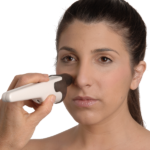Benefits from Thermography
Mapping your health annually helps you detect changes, often before disease develops. Having an annual Functional Thermography allows you to map the changes/heat patterns in your body’s. Most important is the function of the breast but Functional Thermography can also be used to check the whole body. If you are having an infection, the heat will show up in that area. At our office we are providing a full body Functional Thermography.
Functional Thermography allows you to map the changes/heat patterns in your body’s. Most important is the function of the breast but Functional Thermography can also be used to check the whole body. If you are having an infection, the heat will show up in that area. At our office we are providing a full body Functional Thermography.
Thermography is especially helpful for those who suffer from any kind of illness such as:
- headache
- inflammation
- allergy
- fibromyalgia
- kidney issues
- cancer
- etc.
Research has shown that early detection and treatment assistance in problems such as cancer, inflammatory processes, neurological and vascular dysfunction, and musculoskeletal injury will significantly improve your chances for longevity and good health.
It wasn’t well-known that inflammation is responsible for many chronic diseases. However, many physicians now recognize that inflammation is a precursor to many diseases.
Radiation-free, Infrared Thermography is especially helpful for those who suffer from any kind of illness such as: cancer, arthritis, heart disease, stroke, diabetes, and high blood pressure.




